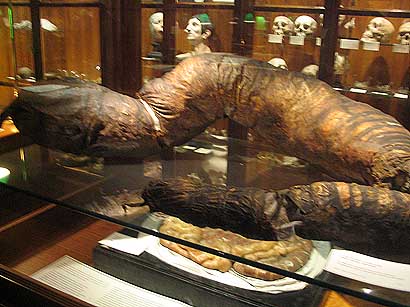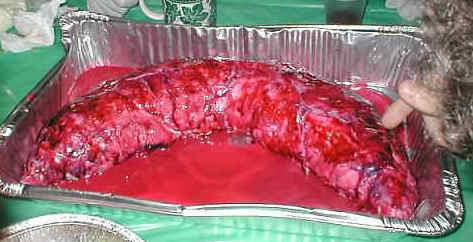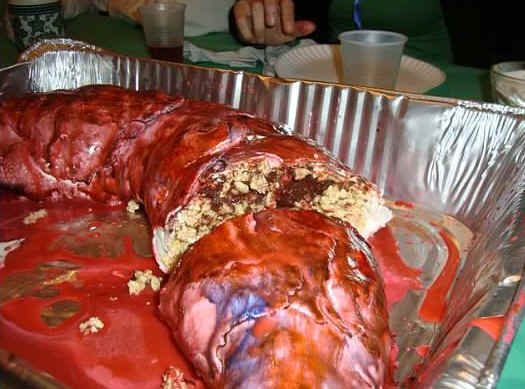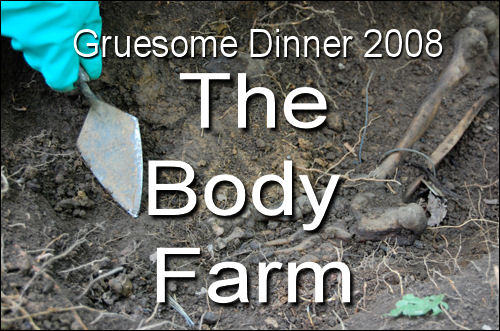

Part 1 - Introduction to the Body Farm
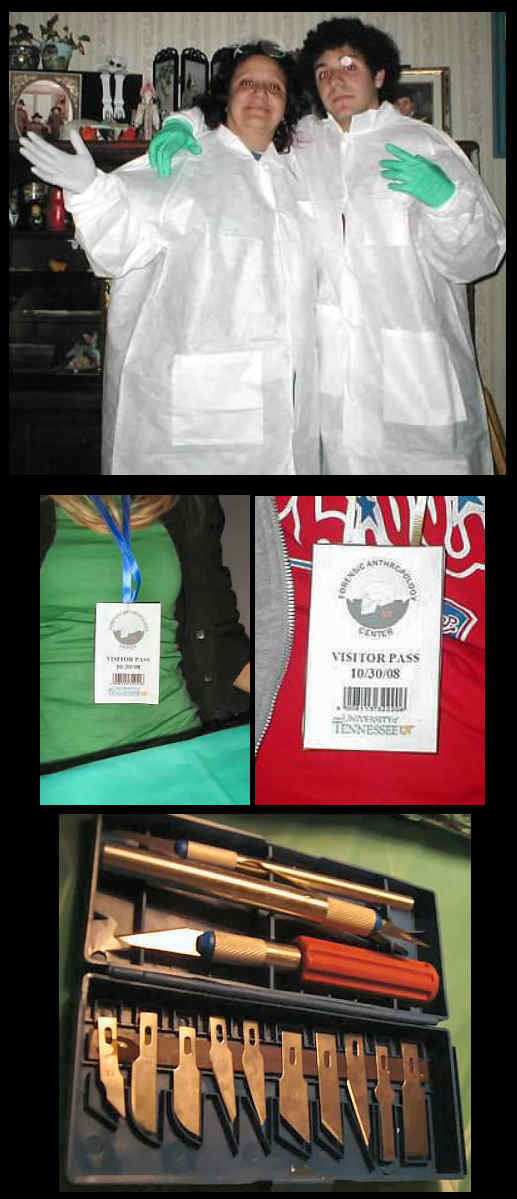


Part 1 - Introduction to the Body Farm

Part 2 - Forensic Entomology
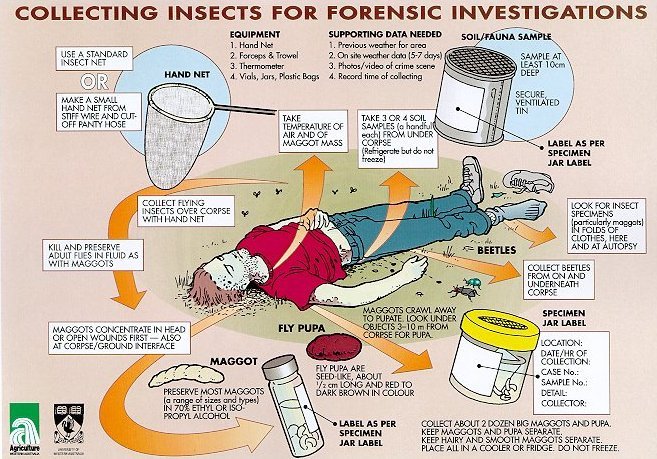
Here is our first corpse. We need to look for insects. This was clearly disturbing to some of the guests.
Retrieved from the woods
Forensic Entomology
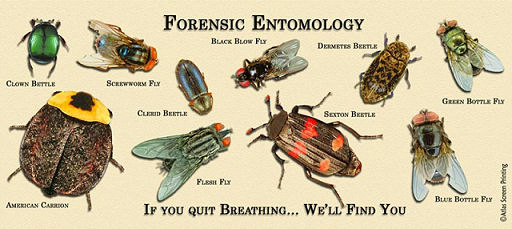
If a body has been dead for quite some time, forensic entomologists use the presence and life cycles of Calliphoridae (flies) and Coleoptera (beetles) on the body to help determine time of death. Examining the life cycle of blow flies and beetles on the body as well as the environment around the body (i.e. weather, temperature, precipitation, etc.) that might affect those insects is one of the best ways of estimating a time of death. Typically, the time of death can be established by checking the temperature or grade of rigor mortis, but this only works recently deceases. To determine the time of death for a corpse already in decay, forensic entomology comes in great utility. Forensic entomology studies a slew of insects, however as far as death investigations are concerned, the main interest is directed towards necrophagous (corpse-eating) insects. The most common of such insects are the blow flies and beetles. Just minutes after death, blow files begin to lay sacks of up to 250 eggs through the body's orifices, such as the mouth, nostrils, genitals, any kind of open wound and so on. Within 24 hours, these eggs hatch into larvae or maggots; this is called the first stage. As they feed they molt into second-stage maggots and after several hours molt into third-stage maggots. If there are a significant number of third-stage maggots feeding on the body it can cause the body’s temperature to rise.After the maggots are done feeding on the corpse, they will begin to migrate away from it and enter the pupal stage. These blow flies pupae typically resemble rat droppings or cockroach egg cases, which often causes them to be overlooked by crime scene investigators; big mistake, since they signify an extremely important stage for forensic entomologists. If the adult insect has yet to emerge, the pupa will appear featureless and rounded on both sides. If the adult insect has emerged, one end will appear cut off and at a closer inspection its hollow interior can be observed. Adult blow flies are easily recognizable by their metallic green or blue appearance.The beetles are one of the largest groups of animals, order Coleoptera. Like the blow flies, beetles also undergo development, with larvae appearing sensibly different form the adult form. An untrained eye might confuse the blow fly maggots with the beetles larvae, since they look very much alike, however its worth nothing that beetle larvae vary greatly from one species to another. The main difference between beetle larvae and maggots found on decomposing bodies is that the the first have 3 pairs of legs, while the latter doesn't have any. The bodies of beetle larvae may range from almost white, robust, and hairless to dark brown, slender, and quite hairy, while other may appear black or with armor plates on their back.Insects recovered from decomposing bodies are of great use to toxicological analysis. While the insects are very fast in devouring the decomposing remains of a body, the same chemicals in the body will be found in the insects themselves, as they've also ingested them. Thus, it's fairly easy to recover insect larvae for toxicological analysis, since insect larvae tissue assimilates drugs and toxins that accumulated in human tissue prior to death.
Examining the First Body
Part 3 Analyzing Stomach Contents
Stomach content is used in the crime lab to help figure out the persons' last meal if it was recent. If they were killed out on the street after dinner hours, time of death puts it right after dinner, then stomach content can narrow down where they were depending on what variety is there. The stomach content can also tell if there is something like poison if it was injected through food. That has to be tested for before it completely leaves the body and all evidence has disappeared into the blood stream. The stomach content can tell a lot about what the person did in the last 24 hours, the content just has to be analyzed and read properly. The stomach content would be collected from the autopsy and the properly taken into the crime lab itself following protocol where the contents can be determined. They need to get all the possible food and other enzymes out of the stomach tissue and acids along with everything from the intestines.

Part 4 - The Autopsy
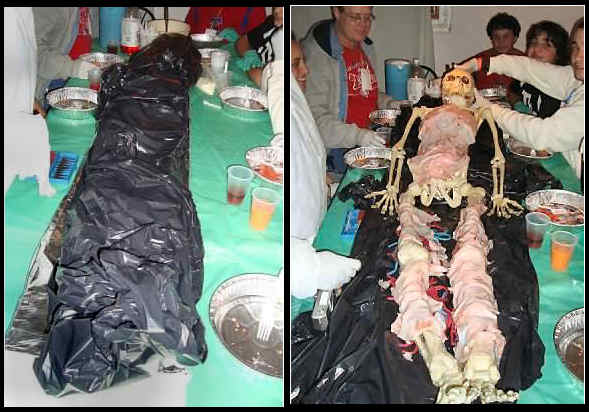
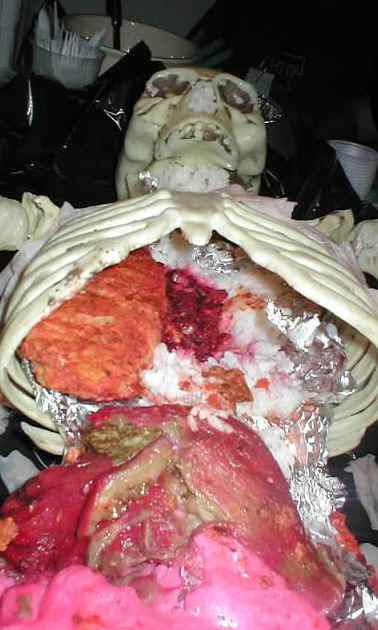
Veins, Arteries and Blood Clots.
Liver, intestines and things
Dessert
Giant Colon from the Mutter Museum
Megacolon – At autopsy the colon was 8ft. long and contained 40 pounds of feces. This colon belonged to a 29-year-old man who suffered from Congenital Aganglionic Megacolon or Hirschsprung’s Disease. The nerve supply to a portion of the colon fails to develop, making it difficult to pass waste. Usually only a small section of the colon is affected, but the body is unable to transfer normal amounts of waste to any points below the affected section causing chronic constipation. This man suffered from constipation his entire life. As his condition progressed, the severity of his constipation increased along with the size of his abdomen. By the age of 16 he would go up to a month at a time without any bowel movements. At age 20 he was exhibited at a dime museum as the “Wind Bag” or “Balloon Man” because of the size of his abdomen. Sadly, even though doctors (in 1892) were able to identify a problem with his colon, he ultimately died of the condition. He was found dead in a bathroom where he was attempting to pass waste. Hirschsprung’s is still a relatively common condition but if identified soon after birth can usually be corrected with a minor surgery.
